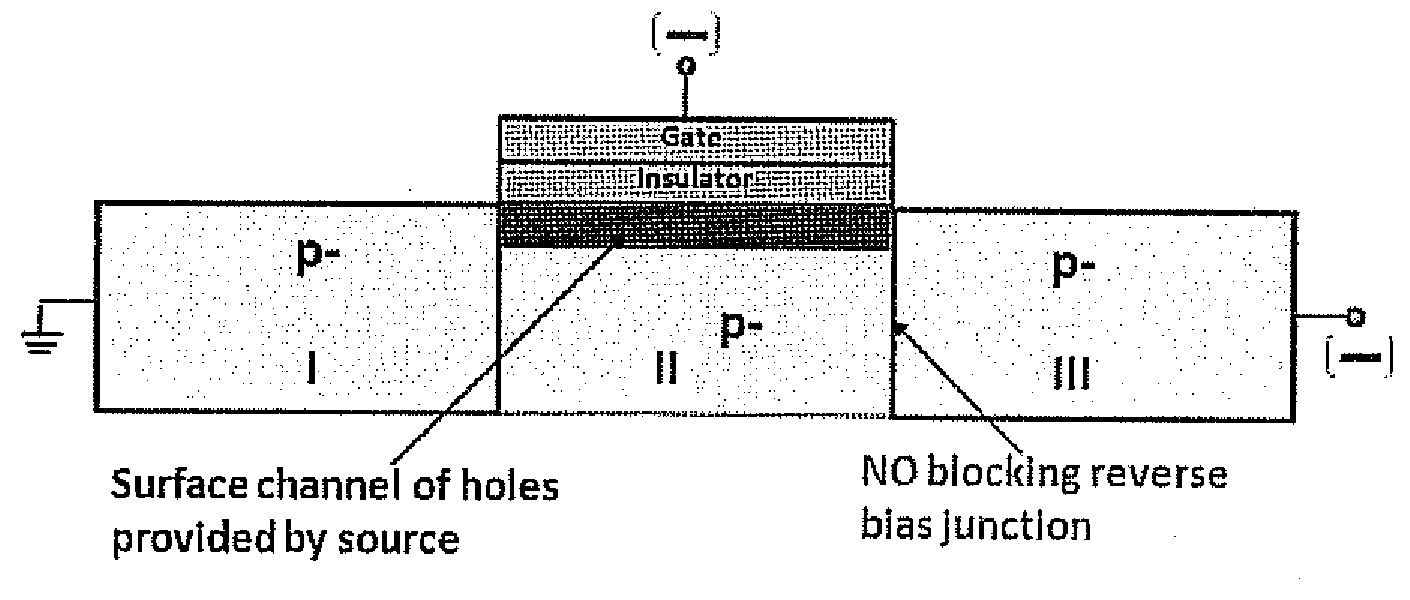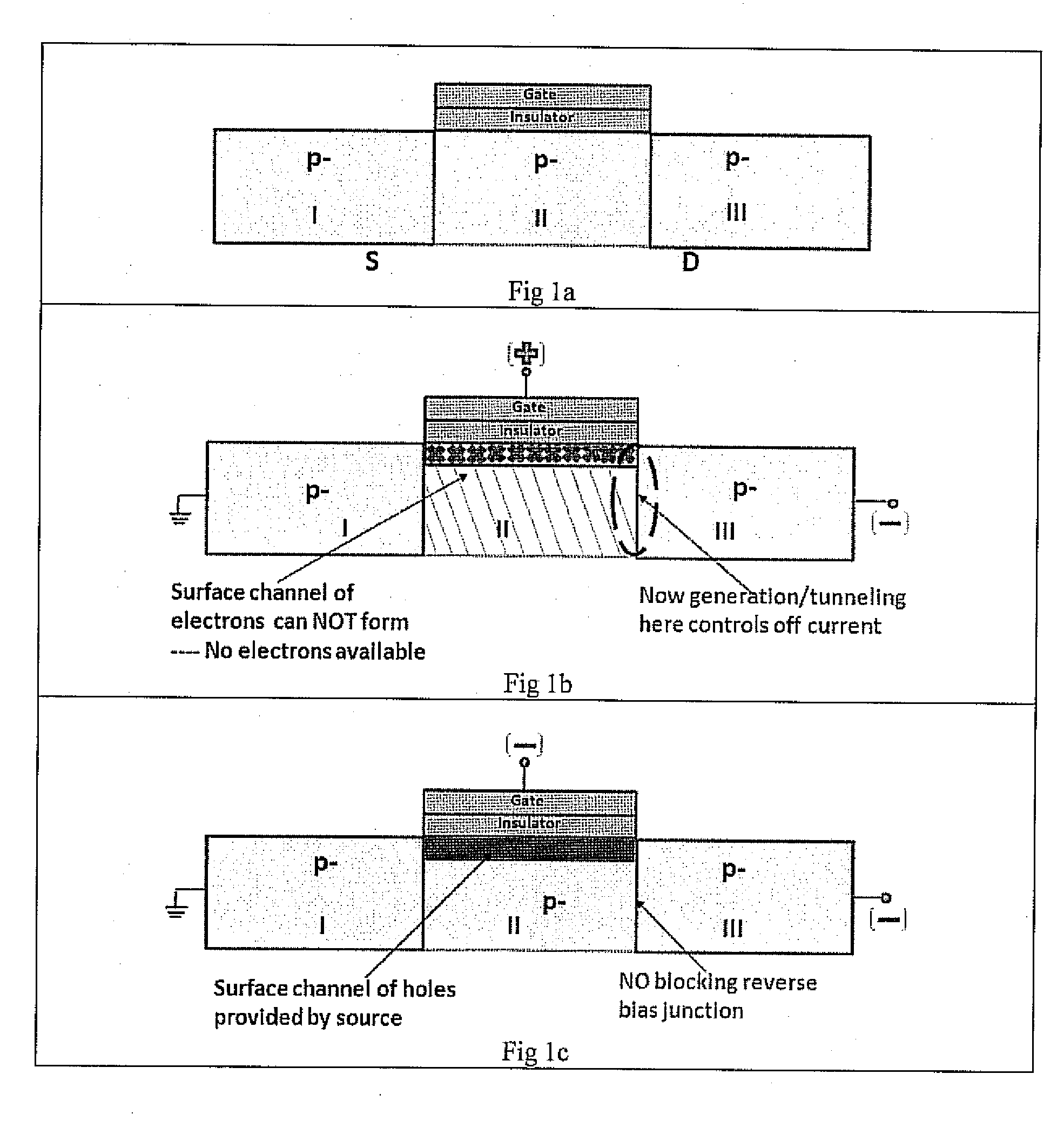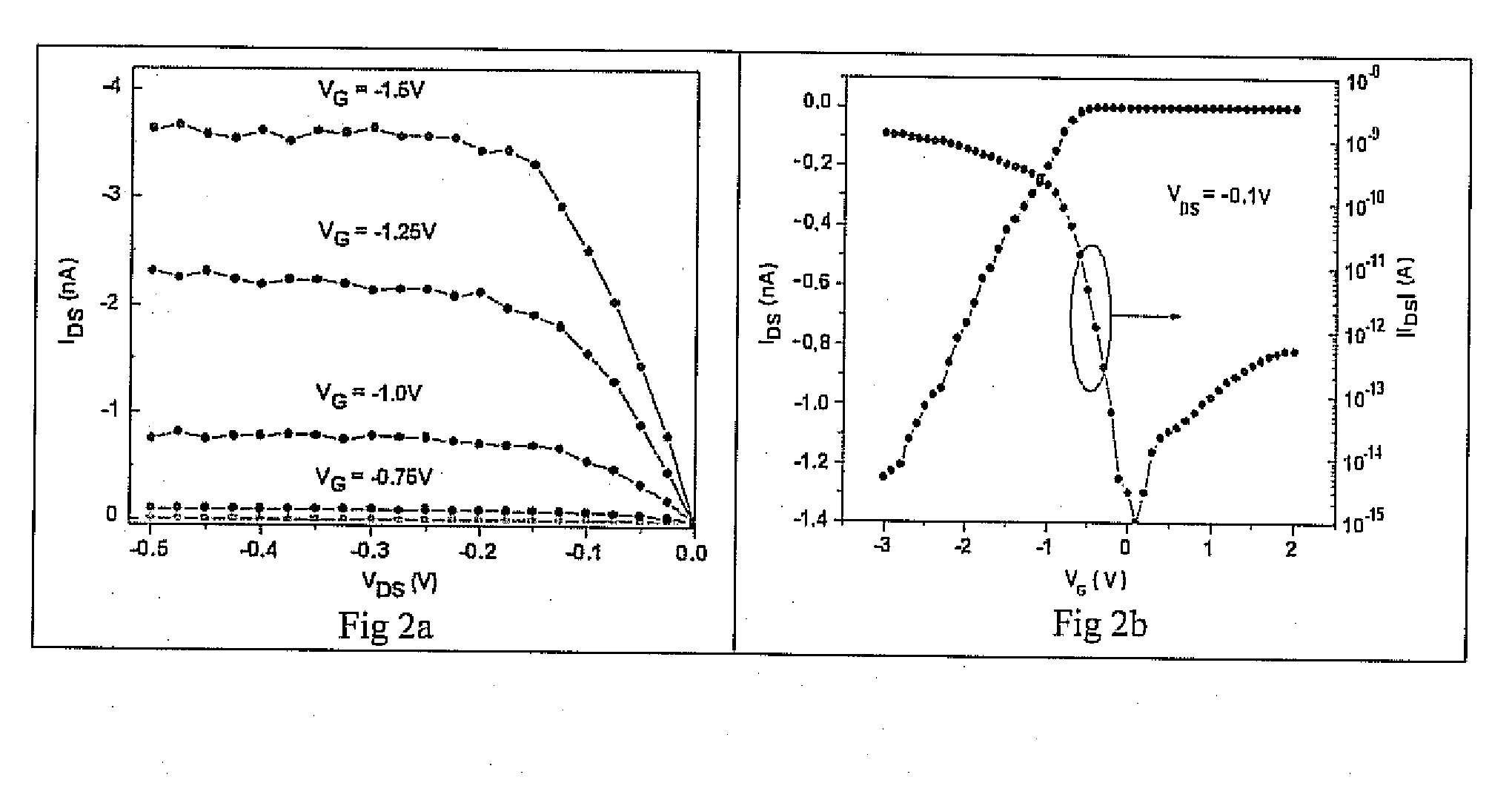Accumulation field effect microelectronic device and process for the formation thereof
- Summary
- Abstract
- Description
- Claims
- Application Information
AI Technical Summary
Benefits of technology
Problems solved by technology
Method used
Image
Examples
example 1
AMOSFET Fabricated Using a Template an a Substrate
[0036]An inventive device is fabricated using silicon nanowire material. The nanowires are grown on a substrate and transistors fabricated in situ. No transfer process is utilized. An inventive device fabrication began with the vapor-liquid-solid (VLS), grow-in-place silicon nanowire (SiNW) growth process in growth channels approach previously detained in U.S. Patent Application Publication 2005 / 0176228.
[0037]In the grow-in-place variation used here, Corning 1737 glass, serves as the substrate on which the permanent growth-templates are constructed. Template construction is known2,4 and the use of such templates is summarized in FIG. 3 for the fabrication of the inventive devices of this example. The resulting permanent templates are designed to allow vapor-liquid-solid (VLS) nanowire growth in, and then finally extrusion out of, the guiding nanochannels under the capping layer of FIG. 3 in the particular version of grow-in-place use...
example 2
Growth Channel Template Transfer and Stamp Technique
[0041]The growth channel template method utilized with a transfer approach is detailed for also producing an inventive device. FIGS. 4A-D and FIGS. 5A-D show the schematic representations of the use of the growth channel templates with a transfer approach. These growth channel templates are made on a mother substrate. Two versions of channel templates are shown: a long / encapsulated channel template (FIG. 4) and a short channel template (FIG. 5). These both show the channel template transfer after nanowire growth from a mother substrate to a flexible substrate. Inventive device fabrication is completed either before or after transfer. Growth channel templates can also be transferred from the mother substrate to the final substrate before nanowire, nanoribbon or nanotube growth in the same way. When done in this manner, full transistor fabrication is done after wire / ribbon growth transfer, with nanowire, nanoribbon or nanotube growth...
example 3
Thin Film Transistor Fabrication
[0042]As discussed above, an inventive device can be fabricated using ultra thin film semiconductors. These are deposited and defined, for example, by etching or are grown nanoribbons produced, for example, by the previously discussed VLS grown-in-place method. Unlike conventional TFT transitors, AMOSFETs fabricated with thin film semiconductors use films of only one doping type (and not n / i / n or p / i / p dopings) and the doping concentration is crucial in determining the on-current magnitude. As is also characteristic of AMOSFET devices, the on-current is not proportional to gate capacitance and gate insulator thickness control need not be of paramount concern.
PUM
 Login to View More
Login to View More Abstract
Description
Claims
Application Information
 Login to View More
Login to View More - R&D Engineer
- R&D Manager
- IP Professional
- Industry Leading Data Capabilities
- Powerful AI technology
- Patent DNA Extraction
Browse by: Latest US Patents, China's latest patents, Technical Efficacy Thesaurus, Application Domain, Technology Topic, Popular Technical Reports.
© 2024 PatSnap. All rights reserved.Legal|Privacy policy|Modern Slavery Act Transparency Statement|Sitemap|About US| Contact US: help@patsnap.com










